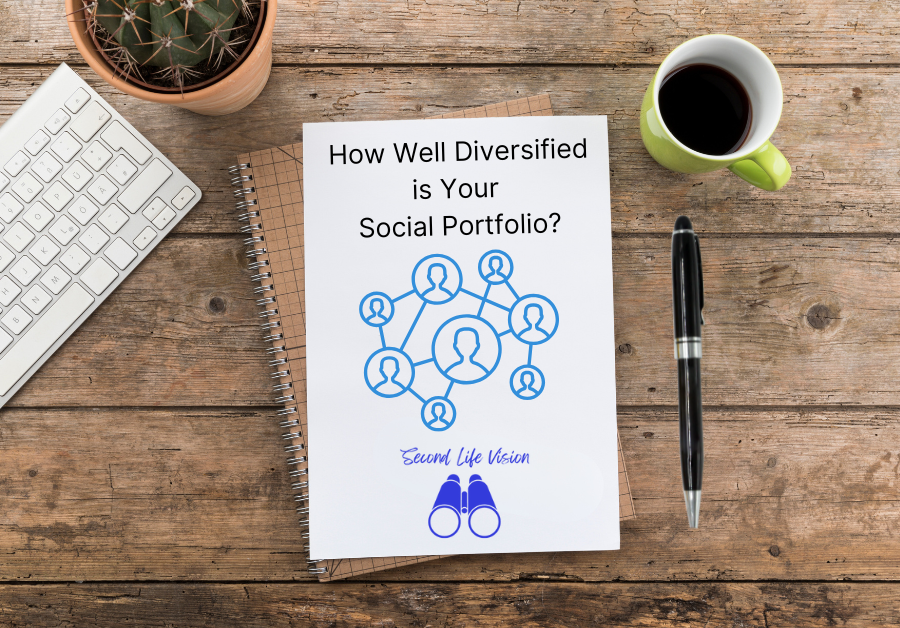As you prepare to transition into retirement, you’re likely paying a lot of attention to your investment portfolio. But emerging research on the impact of loneliness and social isolation highlights the importance of a different type of portfolio—your social portfolio.
June 9 to 15 is Loneliness Awareness Week. This week is dedicated to open, honest conversations about loneliness. It’s an excellent time for a social portfolio review. Your health and wellbeing depend on it.
A mismatch of expectations and reality
One of the unexpected challenges people face with the transition to retirement is the loss of the natural social connections they often take for granted while working.
Research by the Retirement Coaches Association in 2023 showed a disconnect between pre-retirees and retirees in terms of the impact of retirement on their social interactions.
Almost half of pre-retirees believed their social connections would increase when they retired. Retirees, on the other hand, told a different story with 84% reporting a decrease in social interactions after retirement. And half of retirees said the number of quality interactions in a day dropped by half when they left their primary careers behind.
The importance of social connection
Humans are social beings, so connection is a basic human need. Psychology Today reports affiliation with others is deeply rooted in the evolution of humanity. Early humans who formed strong social bonds were more likely to survive and reproduce.
Yet, many in society are lonely. The 2023 Canadian Social Survey revealed 39% of Canadians age 65 or older reported feeling lonely at least some of the time. And the National Institute on Ageing’s Understanding the Factors Driving the Epidemic of Social Isolation and Loneliness among Older Canadians report found as many as 41% of Canadians aged 50 and older are at risk of social isolation and up to 58% have experienced loneliness.
The increase in loneliness is a cause for concern, because connection with others is vital to surviving and thriving at all stages of our lives. Experts define loneliness as a gap between the social connections an individual has and the social connections they want to have. It’s a sense that something is missing.
Even introverts, who are energized by time alone, need to connect—although at a different pace and frequency than extroverts.
The impact of loneliness
Loneliness affects mental and physical health, and it can reduce life expectancy. Yet, it’s rare to consider the role of social connection in overall wellbeing.
In 2023, U.S. Surgeon General Vivek Murthy revealed that a lack of social connection is more dangerous to health than:
- Smoking up to 15 cigarettes a day
- Drinking 5 alcoholic drinks a day
- Being physically inactive
- Being obese
In 2022, the Journal of the American Heart Association associated social isolation and loneliness with a 30% increased risk of heart attack, stroke or death from either.
And when it comes to brain health, the U.S. National Institute on Aging reports loneliness increases the risk for Alzheimer’s by 14%, vascular dementia by 17%, and cognitive impairment by 12%.
It’s clear that loneliness is something to be concerned about. So, how can you set yourself up for continued connection as you head into retirement?

How to do a social portfolio review
Building healthy habits is hard. But unlike other healthy habits, the solution for loneliness isn’t obvious. A good place to start is a social portfolio review. This is an activity a retirement coach can help with, but here are the main steps if you want to get started.
- First, make a list of all your social connections. It may help to group them by family, friends, co-workers, and professional connections.
- Then, evaluate the strength and frequency of each connection on a scale of 1 to 4, where 1 is a casual acquaintance and 4 is someone you’d consider a best friend.
- Next, consider the impact of retirement on your list. Highlight relationships that will continue when you’re no longer working.
- Now, do an overall assessment of your social portfolio. When you take work connections out of the mix, how satisfied are you with who’s left?
- Finally, create an action plan to maintain and strengthen your portfolio. How will you maintain existing relationships? What can you do to make new connections?
Don’t wait until you retire. Taking steps now to establish and maintain social connections can reduce your risk of loneliness and its impact on your wellbeing.
If you’re ready to create a plan for a smooth transition to your next chapter, contact me to set up a free call to discuss my coaching services.

Comments
One response to “How your social portfolio impacts your retirement wellbeing”
[…] How your social portfolio impacts your retirement wellbeing […]